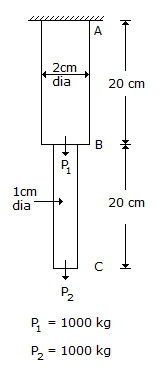Civil Engineering - UPSC Civil Service Exam Questions
Exercise : UPSC Civil Service Exam Questions - Section 6
- UPSC Civil Service Exam Questions - Section 14
- UPSC Civil Service Exam Questions - Section 27
- UPSC Civil Service Exam Questions - Section 26
- UPSC Civil Service Exam Questions - Section 25
- UPSC Civil Service Exam Questions - Section 24
- UPSC Civil Service Exam Questions - Section 23
- UPSC Civil Service Exam Questions - Section 22
- UPSC Civil Service Exam Questions - Section 21
- UPSC Civil Service Exam Questions - Section 20
- UPSC Civil Service Exam Questions - Section 19
- UPSC Civil Service Exam Questions - Section 18
- UPSC Civil Service Exam Questions - Section 17
- UPSC Civil Service Exam Questions - Section 16
- UPSC Civil Service Exam Questions - Section 15
- UPSC Civil Service Exam Questions - Section 1
- UPSC Civil Service Exam Questions - Section 13
- UPSC Civil Service Exam Questions - Section 12
- UPSC Civil Service Exam Questions - Section 11
- UPSC Civil Service Exam Questions - Section 10
- UPSC Civil Service Exam Questions - Section 9
- UPSC Civil Service Exam Questions - Section 8
- UPSC Civil Service Exam Questions - Section 7
- UPSC Civil Service Exam Questions - Section 6
- UPSC Civil Service Exam Questions - Section 5
- UPSC Civil Service Exam Questions - Section 4
- UPSC Civil Service Exam Questions - Section 3
- UPSC Civil Service Exam Questions - Section 2
41.
A ball of mass 1 kg moving with a velocity 2 m/s collides directly with a m2 stationary ball of mass 2 kg. If the first ball comes to rest after the impact, what is the velocity of the second ball after impact ?
42.
What is number of categories into which masonry buildings are divided on the basis of earthquake resistance features ?
43.
A mild steel bar is 40 cm long. The lengths of parts AB and BC of the bar are 20 cm each. It is loaded as shown in the given figure. The ratio of the stresses, σ1 in part AB to σ2 in part BC is


44.
Zero hardness of water is achieved by :
45.
The normal duration and normal cost of an activity are 10 days and Rs 350/- respectively. The cost slope is Rs 75/- per day. If the crash duration is 8 days, then what is the crash cost of the activity ?
Quick links
Quantitative Aptitude
Verbal (English)
Reasoning
Programming
Interview
Placement Papers